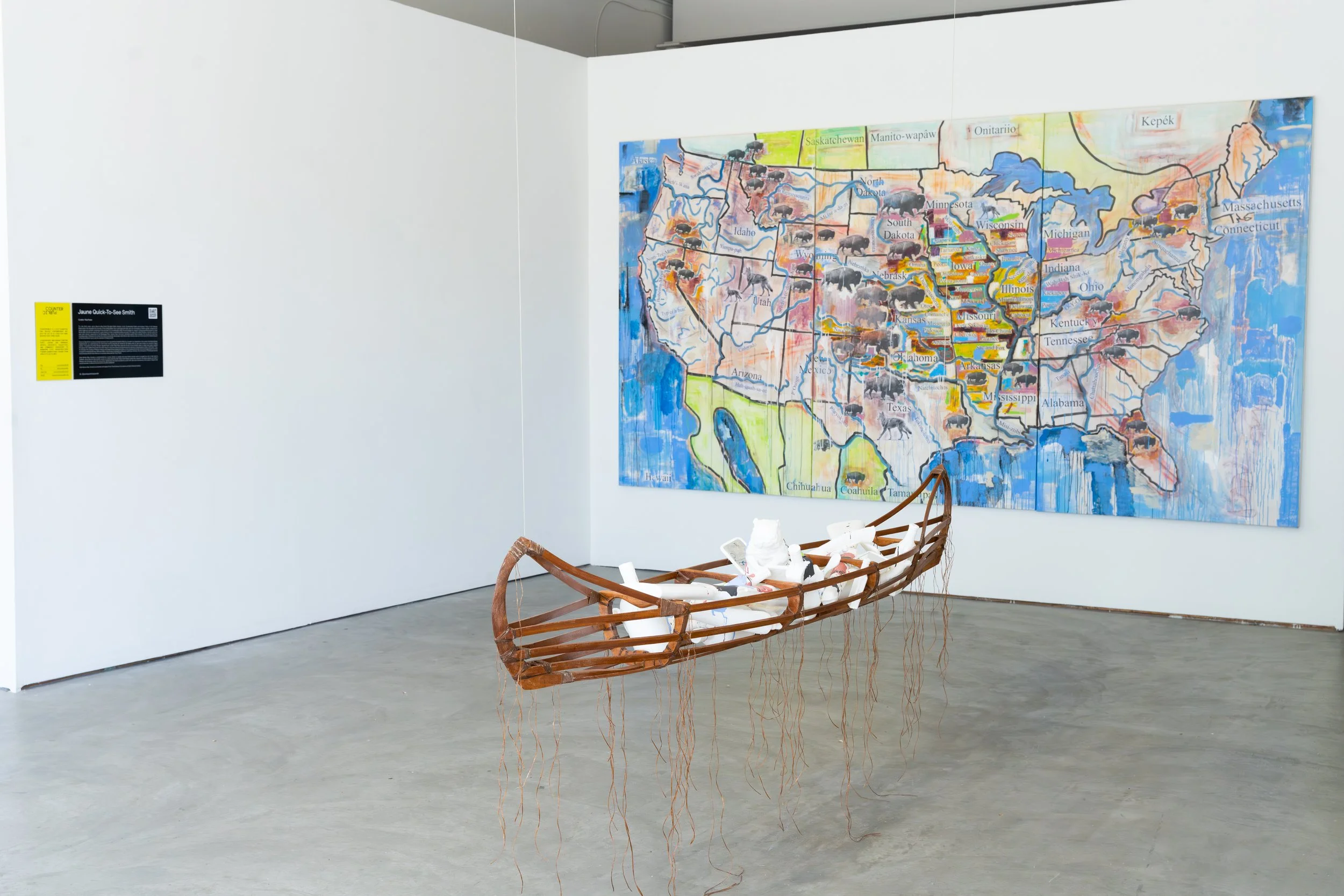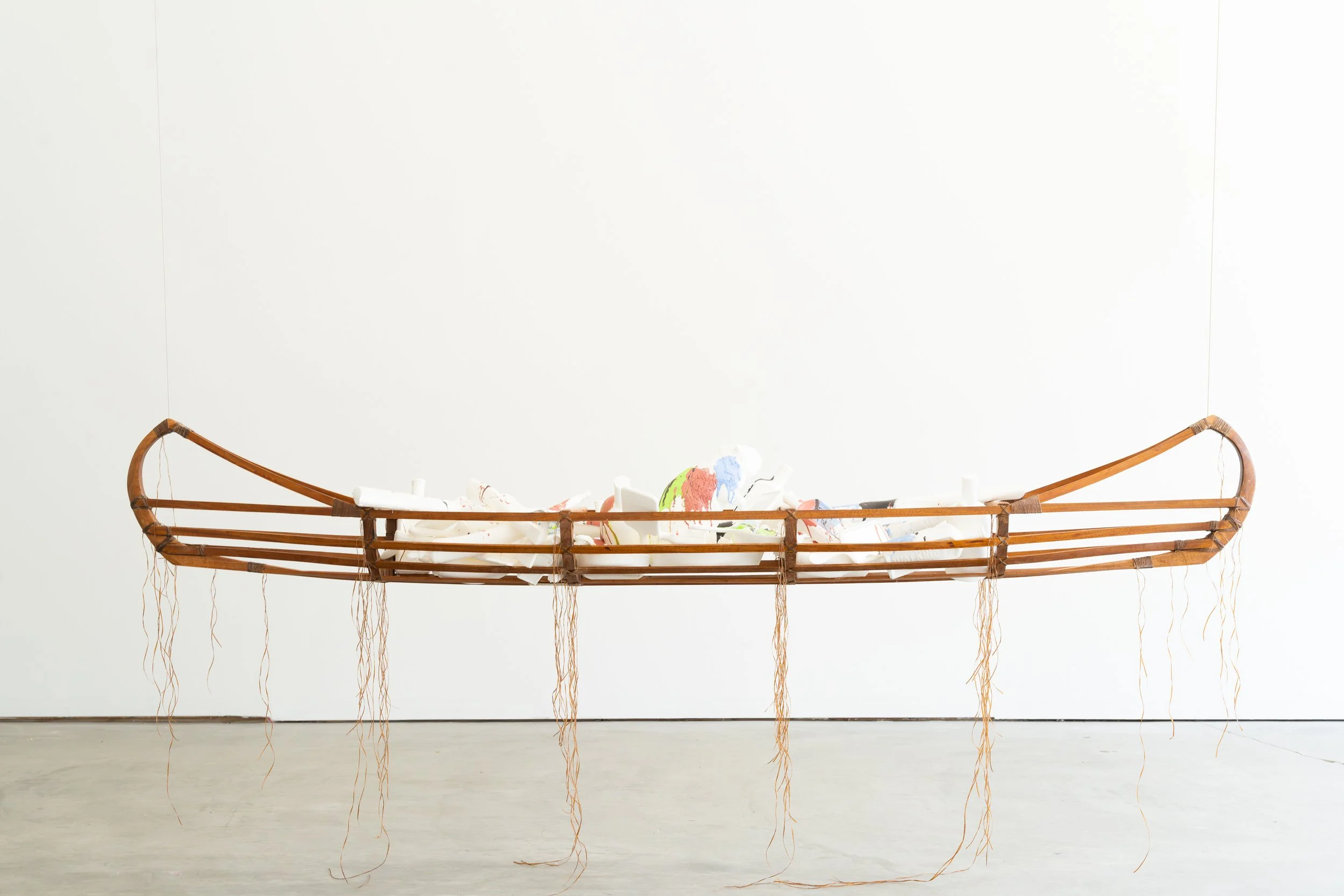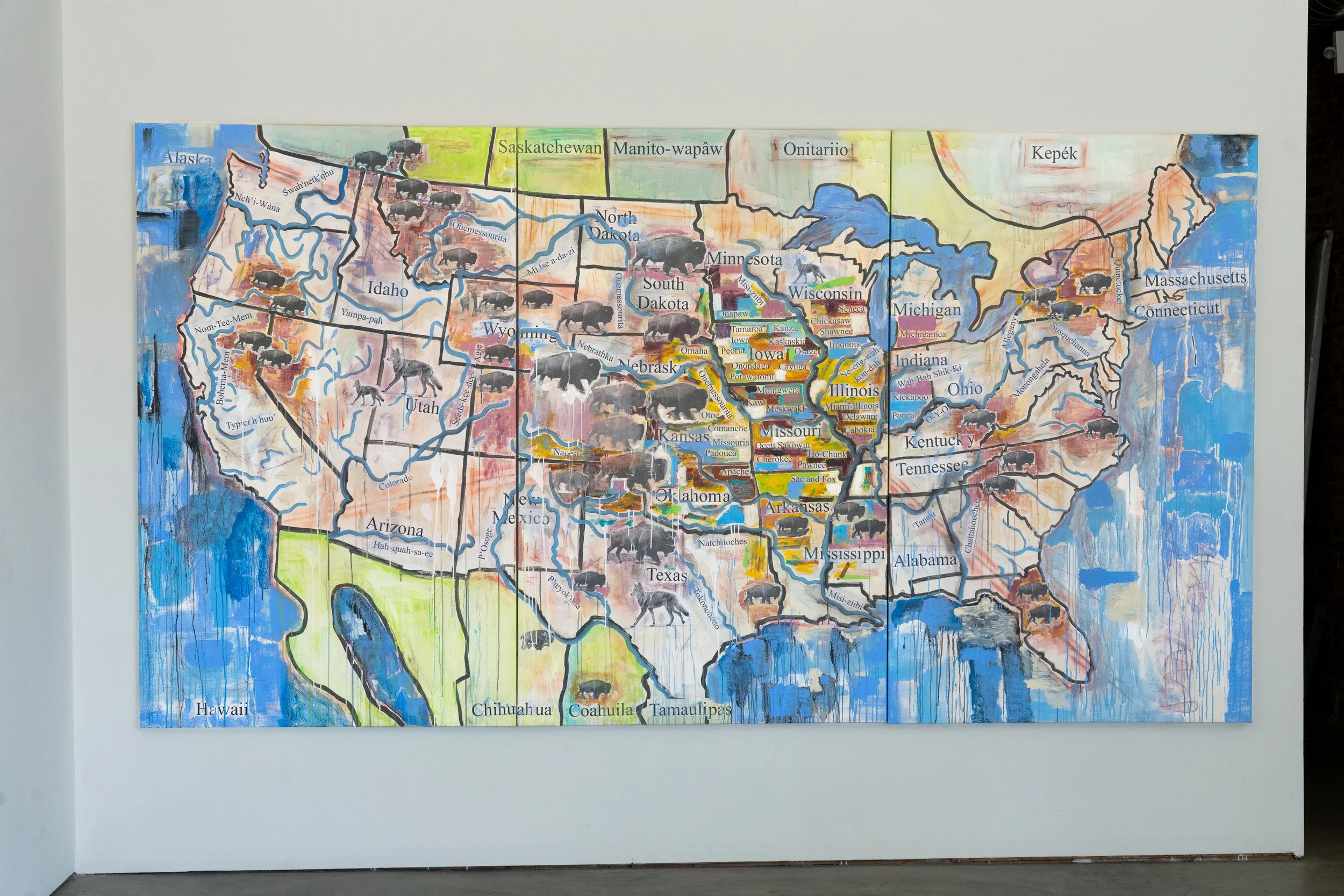Jaune Quick-to-See Smith
Site: MONACO
Curator: Risa Puleo
For over thirty years, Jaune Quick-to-See Smith (Enrolled Salish member of the Confederated Salish and Kootenai Tribes of the Flathead Reservation) has disrupted the iconicity of the United States map in paintings that insist upon the sovereignty of Native people, reclaiming the land’s image as a symbolic reclaiming of the land itself. For Counterpublic 2023, the artist began her research-intensive painting process for State Names Map: Cahokia by exploring St. Louis’s history of trade. Long before settlers arrived in the region then called Cahokia, it was the center of a vast trade network supported by the Mississippi River whose major and minor tributaries guided Native peoples from across the Americas including lands in Montana from where the artist is ancestrally descended. State Names Map: Cahokia asks us to look beyond the flattened space of the United States map to see the vastness of Indigenous life.
Quick-to-See Smith re-enlivens these networks in her map painting installed at Monaco, an artist-run cooperative in the center of the State Streets neighborhood—so called because its north-south-running avenues are named for US states while its east-west streets are named for Native nations. Throughout the State Streets neighborhood, curator Risa Puleo uses the format of the exhibition label to adapt street signs installed throughout the neighborhood (see the visitor map for more information) to bring forward the histories of dispossession hidden within them. Thus, for example, the crossing of Missouri Avenue and Osage Street indexes the history of nine treaties that forcibly removed Osage people from their ancestral homelands between 1808 and 1865 in the process of establishing Missouri’s statehood. Similarly, the intersection of Tennessee Avenue and Cherokee Avenue (where Monaco is located) references the Trail of Tears.
State Names Map: Cahokia is complimented by a canoe, similar to vessels that some Native people used to navigate the river in their trips to Cahokia. Jaune Quick-to-See Smith’s version is constructed from the wood of the Osage orange tree, named for the Native people who lived in Missouri and Arkansas where the tree grows. Additionally, the artist has filled the canoe with cast-resin recreations of the type of objects that would have been traded at Cahokia before and after settlement.
State Names Map: Cahokia is presented with support from The Horseman Foundation and Garth Greenan Gallery.
About the artist
Jaune Quick-to-See Smith has been creating complex abstract paintings and prints since the 1970s grounded in themes of personal and political identity. Smith has received the Academy of Arts and Letters Purchase Award, the Joan Mitchell Foundation Painters Grant, the Women’s Caucus for the Arts Lifetime Achievement, and more. She’s been an Art Table Artist Honoree, was elected to the National Academy of Art in New York, received the Living Artist of Distinction Award at the Georgia O’Keeffe Museum, and has received four honorary doctorates. Smith’s work is included in the collections of the Museum of Modern Art in Ecuador, the Museum of Mankind in Austria, The Walker Art Center in Minneapolis, The Smithsonian American Art Museum, the Museum of Modern Art, the Brooklyn Museum, the Metropolitan Museum of Art, and The Whitney Museum of American Art.
ARTISTS LINKS
Website: jaunequicktoseesmith.org



